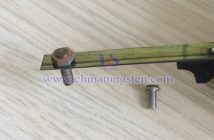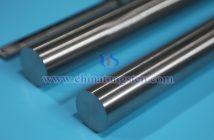The applications of tungsten-nickel-iron alloy as a shielding material in the medical field stems from its unique physical properties, such as high density, good chemical stability, and excellent radiation shielding capabilities. With a density typically ranging from 16.5 to 18.75 g/cm3, its ability to attenuate X-rays, γ-rays, and other radiation is comparable to traditional lead shielding materials. Moreover, it is less prone to fracturing or deforming due to impacts or vibrations, giving it a clear advantage in medical radiation protection scenarios.

In radiotherapy equipment, tungsten-nickel-iron alloy is used as a shielding material for the storage and transmission systems of radioactive sources. High-energy radiation sources such as cobalt-60 and iridium-192, used in radiotherapy, require storage containers with inner shielding layers made from this alloy. By designing shielding structures that match the shape of the radioactive source, radiation leakage can be controlled within safety standards, while the alloy’s structural stability ensures that the radioactive source remains secure during transportation and loading, preventing radiation leakage due to shielding damage.
In nuclear medicine imaging scenarios, tungsten-nickel-iron alloy is commonly used for equipment casings and shielding in radioactive drug storage devices. For example, the radiation source chambers in PET-CT machines and protective layers in cabinets storing radioactive tracers rely on the alloy’s high-density properties to block scattered radiation during equipment operation.

In mobile radiotherapy equipment and bedside treatment scenarios, the advantages of tungsten-nickel-iron alloy are particularly pronounced. Its excellent machinability allows it to be formed into compact shielding covers, meeting both shielding requirements and the need for equipment portability. When radiotherapy equipment must be moved and operated within hospital wards, these shielding components can adjust synchronously with the equipment, keeping radiation within safe limits. This addresses the issue of traditional lead shielding being too heavy for flexible movement.



